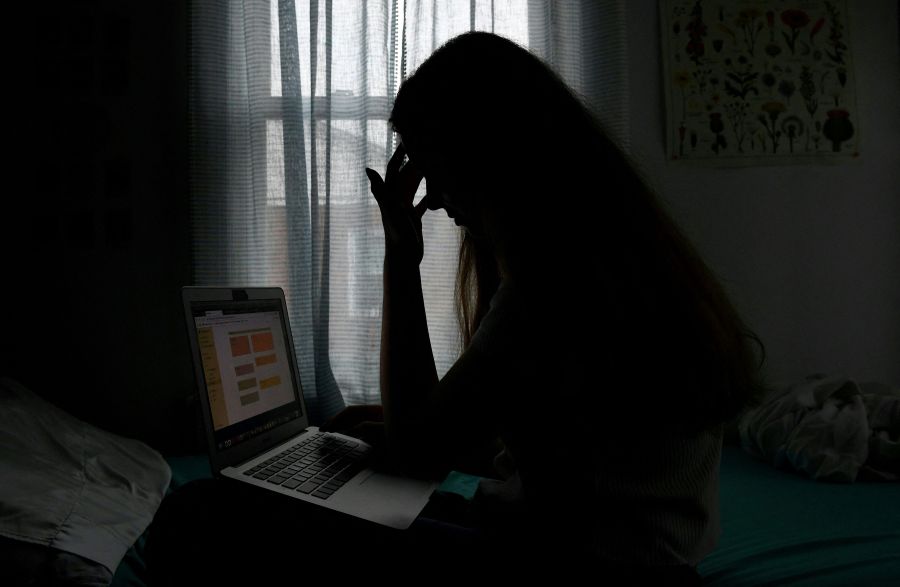The phone number to the national mental health crisis hotline gets a makeover

Before this past weekend, if you needed to call the Suicide and Crisis Lifeline, you had to dial a 1-800 number. But that phone number just got way shorter. Now it’s 988 — though the old one still works. Calls to the lifeline are routed to local counseling centers, generally in the caller’s community.
Marketplace’s Marielle Segarra spoke with Tim Jansen, chief executive officer at Community Crisis Services in Maryland, one of the centers that answer 988 calls.
He said Vibrant Emotional Health — the company that administers the lifeline — and the federal Department of Health and Human Services worked together to secure the number. But it took a few years. The following is an edited transcript of their conversation.
Tim Jansen: They lobbied the [Federal Communications Commission], they did some studies, they looked at what the appropriate number would be. They looked at some of the n-1-1s. Many of them were already taken — 411, 211, 911, 711. Many of them, most of them actually, are taken. And they wound up at 988 so that it would be unique to crisis and suicide and mental health services.
Marielle Segarra: I feel like the technology that drives this — it’s got to be rock solid because the stakes are high. What is being done to make sure that it’s all going to work when it gets superbusy?
Jansen: You know, it’s interesting because it has worked all of these years. We’ve been doing it 17 [years], I guess it is at this point. But over time, there have been a couple of times when the system got rocked. And so the week a few years ago, when Kate Spade and Anthony Bourdain both died by suicide, numbers went up by, like, 400% in a day. They saw a need for more centers, so they created some more regional backup centers. So, so far — knock on wood — so good. The weekend when 988 was officially launched, [we] didn’t see any technical glitches. And we rarely see technical glitches. One of the beauties in having 200 centers across the country and 12 regional backups is if you have an issue in certain areas, you can move to the other areas. So there are lots of things in place to make sure the calls get answered.
Segarra: I think that’s really interesting about the spike in calls that you got. And I wonder what you think the reason is?
Jansen: There are a lot of people that struggle, and they don’t always know where to turn. And so I think as the [hotline’s] number sort of permeates through the culture, people feel better and better about picking up the phone and calling. Like when Logic wrote the “1-800-273-8255” song that specifically mentioned the number, the calls hit the ceiling around that time as well. So I think it’s really people understanding that you’re not alone. And even if it is a stranger, it’s a well-trained stranger, who is going to show you empathy and support and just be there in your time of need.
Related links: More insight from Marielle Segarra
You may be wondering about the privacy implications of calling 988. What happens if you call? Will they know who you are? Jansen said this:
“You can be completely, 100% anonymous on the lifeline. You don’t have to say anything. We will ask some demographic information because funders want it. They want to know who’s reaching out. And sometimes, more importantly, they want to know if we’re missing groups of folk. But any data provided is completely confidential unless somebody is in a life-threatening emergency or in some sort of situation with abuse or neglect of a child or a vulnerable adult. Now, if [callers] need to be connected to resources or we need to send a mobile team, we get permission. We collect that information, [and] that information is completely confidential and follows HIPAA regulations [restricting release of medical information] and confidentiality of mental health information being shared, and we get permission. So we make sure that the person knows we’re going to collect this, we’re going to hand it off to the mobile team, who may need some more information so that we can get out and see you and figure out what we need to do to stabilize whatever situation you’ve got going on, or to connect you with the resources who can do that.”
The thing is, as you heard Jansen say, if a crisis counselor decides that a caller is a risk to themselves or others, they can, and sometimes will, work with the police to figure out that person’s location and send officers.
But “active rescue,” as it’s sometimes called, could lead to forced hospitalization and unexpected medical bills. And critics argue that police are often not equipped to intervene in someone’s mental health crisis and could make a situation worse. Some crisis centers will send mental health professionals instead of police, but it depends where you live.
Here’s a couple of links that make a case against active rescue, including a page from Trans Lifeline, a crisis call line that only intervenes if a caller asks them to, if there is a credible threat to a third party or if there’s suspected child abuse and neglect.
The future of this podcast starts with you.
Every day, the “Marketplace Tech” team demystifies the digital economy with stories that explore more than just Big Tech. We’re committed to covering topics that matter to you and the world around us, diving deep into how technology intersects with climate change, inequity, and disinformation.
As part of a nonprofit newsroom, we’re counting on listeners like you to keep this public service paywall-free and available to all.
Support “Marketplace Tech” in any amount today and become a partner in our mission.


















